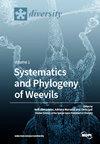Potential Hotspots of Hamadryas Baboon–Human Conflict in Al-Baha Region, Saudi Arabia
IF 2.1
3区 生物学
Q2 BIODIVERSITY CONSERVATION
引用次数: 0
Abstract
In recent decades, conflicts between hamadryas baboons (Papio hamadryas) and the rapidly growing human population in the mountainous areas of Western, Southwestern, and Southern Saudi Arabia have accelerated. This conflict, historically occurring mainly between farmers and baboons, has now moved to the urbanized areas in the baboon range and is mainly caused by the common use of spatial and other resources by baboons and humans. The goal of this study was to describe the spatial distribution of baboon groups and to estimate the population size of baboons in the Al-Baha region. The results indicate that baboons are present in all administrative areas of the Al-Baha region with a concentration along the mountain chain running from northwest to southeast and the western part of the region. As expected, rubbish dumps constitute baboon hotspots due to the large amounts of human-derived food. However, the baboons also travel into towns for foraging. The prevention of baboon accessibility to human-derived food would be an important step to reduce causes of conflicts between humans and baboons.沙特阿拉伯Al-Baha地区Hamadryas狒狒-人类冲突的潜在热点
近几十年来,在沙特阿拉伯西部、西南部和南部山区,hamadryas狒狒(Papio hamadryas)与快速增长的人口之间的冲突加速了。这种冲突在历史上主要发生在农民和狒狒之间,现在已经转移到狒狒活动范围内的城市化地区,主要是由狒狒和人类共同利用空间和其他资源引起的。本研究的目的是描述Al-Baha地区狒狒群体的空间分布,并估计狒狒的种群规模。结果表明,狒狒在Al-Baha地区的所有行政区域均有分布,并沿西北至东南的山脉和西部地区集中分布。正如预期的那样,由于大量的人类食物,垃圾场构成了狒狒的热点。然而,狒狒也会去城镇觅食。防止狒狒获得人类来源的食物将是减少人类和狒狒之间冲突的重要一步。
本文章由计算机程序翻译,如有差异,请以英文原文为准。
求助全文
约1分钟内获得全文
求助全文
来源期刊

Diversity-Basel
Environmental Science-Ecological Modeling
CiteScore
3.40
自引率
12.50%
发文量
925
审稿时长
11 weeks
期刊介绍:
Diversity (ISSN 1424-2818) is an international and interdisciplinary journal of science concerning diversity concept and application, diversity assessment and diversity preservation. It is focused on organismic and molecular diversity. It publishes reviews, regular research papers and short notes in the regular issues. Related news and announcements are also published. Our aim is to encourage scientists to publish their experimental and theoretical results in as much detail as possible. Therefore, there is no restriction on the length of the papers. Full experimental details must be provided so that the results can be reproduced.
 求助内容:
求助内容: 应助结果提醒方式:
应助结果提醒方式:


